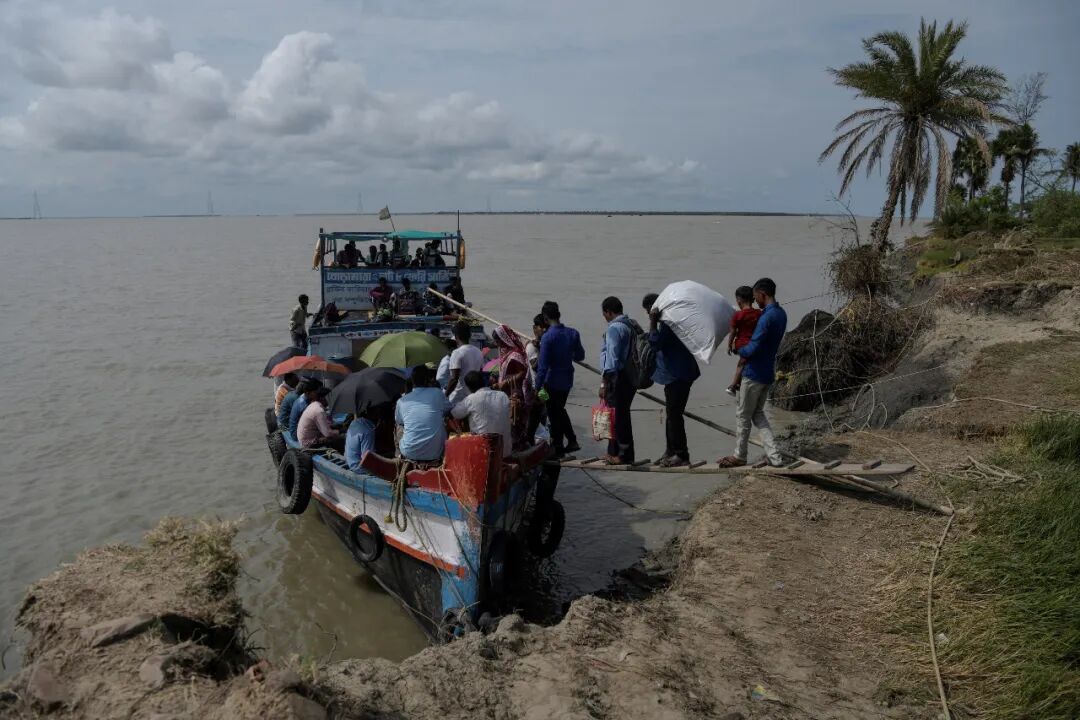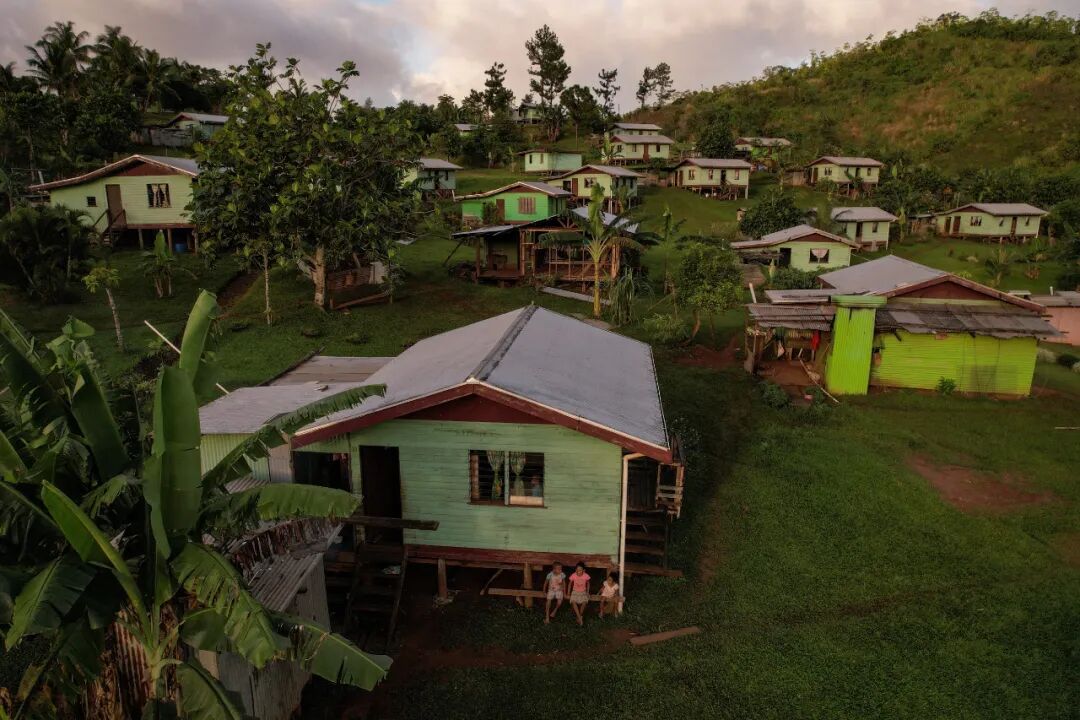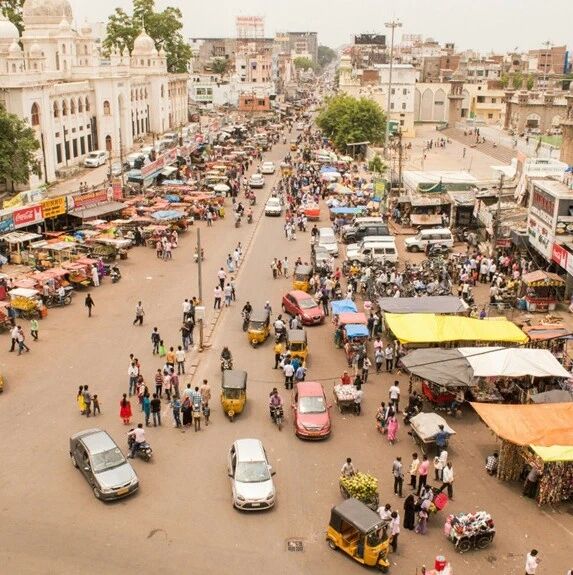

People affected by climate-induced migration risk being trapped in a vicious cycle of poverty.
Image source: Reuters/Avijit Ghosh
Eric Shahzar
Contributor to the World Economic Forum, part-time academic at Oxford University
Climate change is rapidly disrupting global migration, forcing millions of people to relocate due to extreme weather, rising sea levels, and uninhabitable conditions.
To mitigate the impacts of climate-induced migration, it is crucial to implement effective strategies such as climate vulnerability mapping, comprehensive early warning systems, timely cash transfers, and planned relocation initiatives.
Without immediate, targeted interventions, populations affected by climate migration will find themselves trapped in a vicious cycle of poverty and insecurity.
Global migration and displacement are being driven by climate change. Extreme weather events, rising sea levels, and coastal erosion are making many regions uninhabitable, forcing millions of people to leave their homes behind.
By 2050, an estimated 1.2 billion people could be displaced due to climate-related disasters. As large-scale climate migration becomes increasingly frequent, there is an urgent need for immediate, targeted policies to address this growing challenge. Delaying action will only exacerbate the crisis, pushing affected populations into extreme poverty and insecurity—and ultimately triggering further secondary migrations.
Climate Migration: People on the Move
Population movement driven by environmental factors is not a new phenomenon, but the accelerating pace of climate change is disrupting established migration patterns worldwide. Those affected are often forced to relocate, as they perceive staying put as far more dangerous than leaving.
Since 2020, the number of people displaced by climate-related disasters has been rising annually. Driven primarily by climate change, this figure is expected to continue increasing in the years ahead.
In Somalia, for every 1°C rise in local monthly temperatures, the number of people expected to be displaced in 2023 could increase by approximately 10 times (1,098%). This highlights that even a slight temperature increase could trigger large-scale, forced migration.
When displacement becomes inevitable, we must recognize its multifaceted impacts on people’s lives, social harmony, political stability, and the economy—understanding these effects is crucial for developing more inclusive and systematic response strategies. To address the growing severity of this crisis, countries can adopt the following four forward-looking measures to tackle global climate-induced migration:
1. Climate Vulnerability Mapping
For many countries with limited resources and constrained governance capacities, the lack of a unified monitoring and evaluation framework to track climate adaptation outcomes poses a significant challenge.
Currently, more than 60% of countries that have developed national adaptation plans have not systematically assessed their implementation, highlighting a significant gap in evaluating adaptation strategies. By mapping climate vulnerability, high-risk areas can be identified, enabling more targeted and effective interventions.
This technology leverages geospatial tools and data to assess how communities and systems are impacted by climate change, with a particular focus on their vulnerability and capacity to cope with adverse effects—such as those caused by climate change and extreme events.
Glasgow, Scotland, aims to strengthen the resilience of more than 140,000 people in the region by developing and implementing climate vulnerability maps.
This strategic approach helps identify high-risk areas and vulnerable populations, thereby enabling more effective planning and adaptation measures to mitigate the adverse impacts of climate change.
2. A Comprehensive Early Warning System
After identifying the most vulnerable areas, the government must establish and expand the early warning system.
These comprehensive systems integrate monitoring, forecasting, risk assessment, and emergency preparedness into a single framework—they are proven, cost-effective disaster reduction and climate adaptation measures that can effectively save lives. Yet, many countries have still failed to fully leverage this powerful tool.
For example, these systems currently operate only in 24 of the most climate-vulnerable valleys in northern Pakistan, while the southern coastal regions—already grappling with rising sea levels and freshwater shortages—face even greater risks of climate-induced migration but remain largely uncovered.
Therefore, it is essential to deploy early warning systems nationwide, particularly in high-risk coastal areas.
At last year's United Nations Climate Change Conference, UN Secretary-General António Guterres announced that, through the "Global Early Warning Initiative," the UN aims to ensure that every person on Earth is protected by a multi-hazard early warning system by 2027.
3. Timely Cash Transfers
A more direct and constructive approach to climate adaptation is providing "timely cash support" to vulnerable populations in climate hotspots. In Bangladesh, research shows that households receiving timely cash transfers are 52% less likely to go a day without food compared to those that do not receive such assistance promptly.
Integrating this approach into a broader climate adaptation strategy can help mitigate both the short-term and long-term impacts of migration and livelihood losses.
By leveraging data-driven weather forecasts, financial support can be delivered to high-risk households before disasters strike, enhancing their ability to cope and strengthening their resilience.
Strengthening people's financial resilience can effectively mitigate the impact of climate shocks.
4. Relocation Plan
Unlike temporary evacuations, planned relocations offer high-risk communities a long-term and constructive solution.
When certain regions experience frequent disasters, become uninhabitable for humans, or are projected to become unlivable due to climate change, planned migration can serve as a proactive strategy to prevent future displacement.
When the original place of residence can no longer be returned to, planned relocation becomes a necessary option. The first step in initiating a planned move is assessing its necessity.
This decision must be grounded in scientific evidence. For instance, in Fiji, climate change has already identified 42 villages that may need to relocate within the next 5 to 10 years—six of these villages have already been moved. As extreme weather events become increasingly frequent, more and more communities will require systematic relocation plans.

Fiji's new location for Vunidogoloa village—In 2014, Fiji became the first Pacific island nation to relocate an entire community due to rising sea levels.
Image source: Reuters/Loren Elliott
Climate-driven migration has become an urgent global reality. As extreme weather events and rising temperatures persist, millions will be forced to grapple with the difficult decision of "when and where to move."
If governments and the international community prioritize proactive measures—such as climate vulnerability mapping, early warning systems, cash transfers, and planned migration—they can effectively mitigate the human impact of climate-induced displacement, safeguard livelihoods, and strengthen the resilience of vulnerable regions.

The above content solely represents the author's personal views.This article is translated from the World Economic Forum's Agenda blog; the Chinese version is for reference purposes only.Feel free to share this in your Moments; for reprints, please leave a comment at the end of the post or message us via our official.
Editor: Wang Can
The World Economic Forum is an independent and neutral platform dedicated to bringing together diverse perspectives to discuss critical global, regional, and industry-specific issues.
Follow us on Weibo, WeChat Video Channels, Douyin, and Xiaohongshu!
"World Economic Forum"


